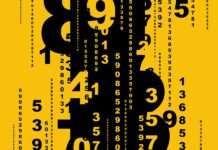Automaker Mercedes Benz may have sold 600 units during Diwali, but the automobile sector as a whole is at a low point, forcing the government to assist the massive employment creating sector that contributes 7.2% of GDP.
Following environmental concerns, the National Mission for Electric Mobility was launched in 2011 by the Department of Heavy Industry (DHI) to promote electric vehicles (EVs). The DHI then unveiled the National Electric Mobility Mission Plan 2020 in 2013, under which the flagship scheme, FAME India (Faster Adoption and Manufacture of Hybrid and EVs) was launched in 2015. Although sales were a mere 280,995, the target of 15 million EVs in India by 2020 requires greater resources.

Partner
HSA Advocates
FAME II was launched in March 2019, with a substantially higher outlay of the equivalent of US$1.41 billion over three years compared to the equivalent of US$126.5 million over four years for FAME India. The equivalent of US$1.27 billion is reserved for demand incentives to boost sales and investment in EVs. The government think tank, NITI Aayog, considers that 30% of private cars, 70% of commercial vehicles, 40% of buses and 80% of two- and three-wheelers will be EVs by 2030. By August 2019, DHI had already permitted, under FAME II, 5,595 electric buses of the targeted 7,000.
Domestic manufacturing of EVs
The battery pack forms the core of an EV. In March 2019, the DHI laid down technical eligibility criteria for EVs to receive demand incentives under FAME II. EVs must be equipped with lithium-ion (li-ion) batteries. Up to September 2018, 90% of FAME beneficiaries were e-scooters powered by lead-acid batteries. There will thus be little benefit under FAME II until EVs are powered by li-ion batteries. While FAME II does not incentivize independent manufacturing of li-ion batteries, the government intends to establish a subsidy plan worth the equivalent of US$9.9 million in December 2019, and to invite bids for the local manufacture of batteries, thereby promoting the flagship Make in India initiative.
You must be a
subscribersubscribersubscribersubscriber
to read this content, please
subscribesubscribesubscribesubscribe
today.
For group subscribers, please click here to access.
Interested in group subscription? Please contact us.
你需要登录去解锁本文内容。欢迎注册账号。如果想阅读月刊所有文章,欢迎成为我们的订阅会员成为我们的订阅会员。
Dipti Lavya Swain is a partner and Ketaki Dandiya is an associate at HSA Advocates.

HSA Advocates
81/1, Adchini
Sri Aurobindo Marg
New Delhi – 110 017, India
Tel: +91 11 6638 7000 Fax: +91 11 6638 7099
Construction House 5/F Walchand Hirachand Marg
Ballard Estate
Mumbai – 400 001, India
Tel: +91 22 4340 0400 Fax: +91 22 4340 0444
Email: mail@hsalegal.com
Website: www.hsalegal.com































